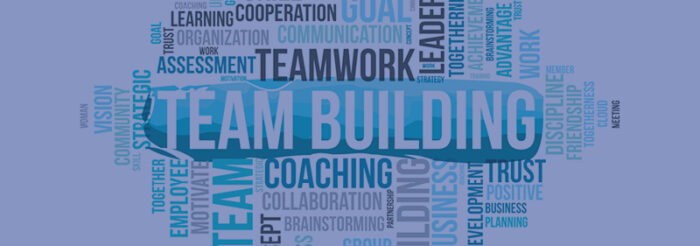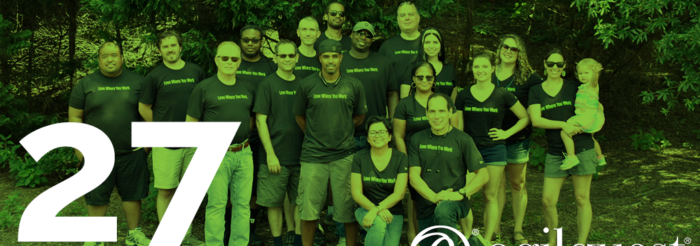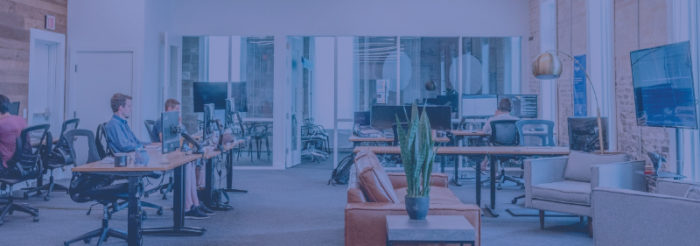Managing a Safe, Post-COVID Workplace It has been a year of whiplash as we’ve seen different variants and peaks of COVID reverse or delay plans to return to the office. Now, as many organizations are finally getting back to the office and some semblance of normalcy, the question on everyone’s mind is how to keep … Continue reading
Teamwork: A Team That Works in the Hybrid Workplace The Hybrid Workplace has become the talk of the town. According to LinkedIn’s Global Talent Trends 2022 report, 81% of C-level executives said they’re changing their workplace policies to offer greater flexibility. And employees are thrilled. With a hybrid workplace, the workforce feels empowered and management still … Continue reading
Control in the Hybrid Workplace Everyone is looking for answers. C-level executives and managers are struggling to find the right and safe way to get employees back into the office. Employees are excited about the flexibility of remote work and what that could mean for their future of work. No one really knows what the … Continue reading
The workplace is changing. Scratch that. Has changed. No, scratch that, too. The workplace is constantly evolving and changing into what the workforce and the world needs at the time. The pandemic taught us that where and how we work should be fluid. And it’s up to organizations to make sure they keep with the … Continue reading
There are so many moving parts to creating and implementing a hybrid workplace and one element you can’t skim over is workforce adoption. You can create the most seamless, efficient hybrid workplace but without your employees getting on board, it will just sit there as useless as the Six Flags in New Orleans. So, let’s … Continue reading
It seems all anyone ever wants to talk about is hybrid this, flexible that. But what about the other side? The traditional, 9-5 in-office job. There are still many employees who work best in the office with set hours. And many jobs that must be done this way. 62% of employees say their jobs can’t … Continue reading
When creating a hot desking program for your workplace, it’s best practice to write up a policy and guidelines for the workforce and workplace to follow. We designed a checklist that can help you get started. What is Hot Desking? Hot desking is a flexible workplace practice that keeps offices, conference rooms, etc., open for … Continue reading
To manage a successful, flexible workplace, follow these 9 hot desking best practices. The purpose of the workplace is changing and employees are wanting to see more flexible, hybrid workplace policies, like hot desking. Hot desking is getting a better reputation for itself and organizations are starting to understand why. So, with hot desking on … Continue reading
What is hot desking and how can it benefit your organization? This flexible workplace practice might be what your company and workforce needs! Hot Desking 101 What is hot desking? What are the benefits? How do you implement hot desking? How do you manage hot desking? How do you support a hot desking program? Flexible. … Continue reading
Wow, do we feel old! 27 years under the belt. What lies ahead of us? We are excited to find out. But first, what have we learned in these 27 years? We asked our AQ crew to share! AgilQuest truly embraces everyone as a family (especially during times of need)! I’ve learned the true meaning … Continue reading
Following a June 10, 2021 Order from the White House Administration, a Federal Task Force has charged all agencies with completing their plan for reentry by July 19, 2021. This includes, “how and when to return an increased number of employees and contractors, as appropriate, in-person to the Federal workplace – as well as their … Continue reading
So, you’ve started thinking about implementing a workplace reservation system to handle your post-COVID return to the workplace. 50% of US Executives plan to invest in hoteling applications That’s a great decision because that software can help: Follow guidelines like physically distancing workspaces, limiting capacity, and managing who comes in and out of the building, Employees keep … Continue reading
A company’s culture is created at its conception and continues to form around the employees and the values of the company over time. It’s an ongoing process encompassing company value and ethics, leadership, and the way employees feel about their work, their company, and its goals. Prior to the 2020 pandemic, the majority of company … Continue reading
In the last post, we covered how to create a hybrid workplace, what that actually means, and companies that are currently managing a hybrid workplace. The next step is knowing how to support your hybrid workplace by ensuring your company has the right workforce, technology, and space. The hybrid workplace is a flexible workplace practice … Continue reading
The Hybrid Workplace: Industry’s Latest Buzzword As an employee encouraged to work from home when COVID-19 struck in 2020, I know going back to in-office work is going to be a big transition. If I didn’t work for an already flexible company that will continue to let me work from home as I please, I … Continue reading















